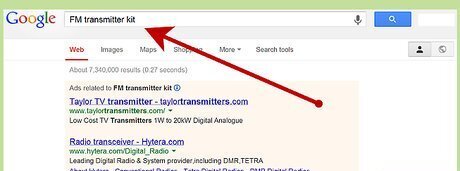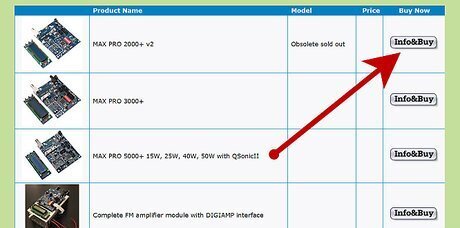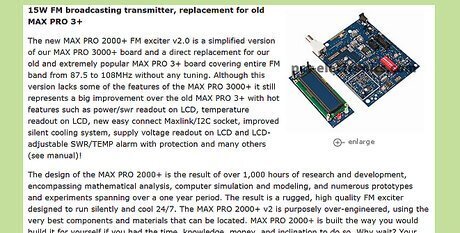
views

Determine need. A popular use for these devices is to transmit audio from a portable MP3 player or internet radio station on a computer to a radio or stereo located in another room or even outdoors. Some choices are: Mono or Stereo? How powerful (size of area to cover)? How many inputs (microphone and / or aux)? What kind of power source (battery or AC adapter)? These are just a few of the questions to be answered to obtain the correct transmitter for the application desired.

Search. Use Google (or other search engine of choice) to look up "FM transmitter kit" Make sure that prior to purchasing; the transmitter selected is permitted for use in your country. Use of FM transmitters are highly regulated by government agencies and if used improperly may result in fines and imprisonment when caught. Don't forget to check any local electronics supply stores, too. Kits for all types of electronic projects are a popular staple at electronics stores, and the store should be checked if there is one nearby.

Decide. Select a kit that will best perform the task within the budget and place the order. If ordering online, be sure to consider additional costs for shipping and the time it takes to be delivered.

Obtain materials. Most kits include all required parts, including circuit boards, components and even solder. Tools however, are not. Bare minimum would be a low wattage pencil style soldering iron with a small chisel or point tip. There is no need for an iron rated more than 30 or 40 watts. A stand or holder for the soldering iron will help keep it from burning surfaces and from rolling away. A solder wick is braided copper "wire" that when laid on cold solder and heated, will wick excess solder away. This is a handy item to have, especially for those who have never soldered before. A tinning compound is used to prepare a new soldering tip for first use. It is also used to clean the tip as it gets dirty. Most of these items are available in a soldering tool kit at Radio Shack and other electronics stores.

Review. Once the kit and tools have been brought together, read the kit directions completely before even plugging the soldering iron in. Review the components of the kit against the inventory list (extra parts are OK - missing parts will cause problems) If unsatisfied, either contact distributor or obtain any missing parts before continuing.
Build. Set aside at least the amount of time recommended in the kit directions to perform the assembly and soldering. Allow more time if this is the first time building a kit or using soldering iron. Lay out components and tools on a clean heat resistant surface. Assemble kit as outlined in directions.













Comments
0 comment